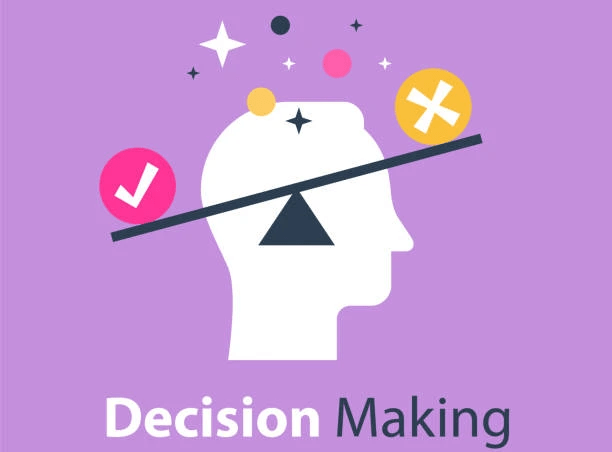
SKILLS OF DECISION MAKING (DECISION MAKING SKILLS)
Introduction:
Decision making is an indispensable part of life. Everyone has difficulty making decisions at times. Improving your decision-making skill can help you approach decisions with more confidence. In this article let’s see the Skills of Decision Making & Techniques for Decision Making.
What is Decision?
Decision is a choice whereby a person comes to a conclusion about given circumstances/ situation. It represents a course of behaviour or action about what one is expected to do or not to do.

What are Decision-Making Skills?
- Decision-making is the process of selecting one course of action from several alternative actions. It involves using what you know (or can learn) to get what you want.
- To improve your decision making skills, you need to know yourself, your values and your abilities. Values are your opinions about what is “right” or “good” or “valuable.” Your values reflect what you think is important in life.
Why Decision making is Important?

- Developing the skills of decision making will give you more freedom and control over your life and increase your chances of being satisfied with your decisions. A skilled decision-maker develops more alternatives from which to choose and a better chance of achieving the alternative selected.
- Managers at all level in the organisation make decision and solve problems. In fact, decision‐making is the process of reducing the gap between the existing situation and the desired situation through solving problems and making use of opportunities.
SKILLS OF DECISION MAKING:

The following are required Skills for Decision Making
- Active Listening Skills
- Interpersonal Skills
- Communication Skills
- Collaboration
- Logic
- Problem Solving Skills
- Critical Thinking
- Time Management Skills
- Emotional Intelligence
- Leadership Skills
Elements of Decision Making

These are following elements in decision making:
- The decision maker.
- The decision problem or goal.
- Attitudes, values and personal goals of the decision maker.
- Assumption with regard to future events and things.
- The environment in which decision is to be made.
- Available known alternatives and their estimated or imagined outcomes.
- Analytical results in the whole perspective.
- The constraints.
- The act of selection or choice.
- Timing of decision.
- Proper communication of decision for its effective execution
Techniques For Decision Making
The Decision taken is aimed at achieving the Organizational goals. Follow the below steps for taking Effective Decision.

Step by Step Decision Making Process:
Using a step‐by‐step decision‐making process can help you make more deliberate, thoughtful decisions by organizing relevant information and defining alternatives. This approach increases the chances that you will choose the most satisfying alternative possible.
Step 1: Identify the decision
You realize that you need to make a decision. Try to clearly define the nature of the decision you must make. This first step is very important.
Step 2: Gather relevant information
Collect some pertinent information before you make your decision: what information is needed, the best sources of information, and how to get it. This step involves both internal and external “work.” Some information is internal: you’ll seek it through a process of self‐ assessment. Other information is external: you’ll find it online, in books, from other people, and from other sources.
Step 3: Identify the alternatives
As you collect information, you will probably identify several possible paths of action, or alternatives. You can also use your imagination and additional information to construct new alternatives. In this step, you will list all possible and desirable alternatives.
Step 4: Weigh the evidence
Draw on your information and emotions to imagine what it would be like if you carried out each of the alternatives to the end. Evaluate whether the need identified in Step 1 would be met or resolved through the use of each alternative. As you go through this difficult internal process, you’ll begin to favor certain alternatives: those that seem to have a higher potential for reaching your goal. Finally, place the alternatives in a priority order, based upon your own value system.
Step 5: Choose among alternatives
Once you have weighed all the evidence, you are ready to select the alternative that seems to be best one for you. You may even choose a combination of alternatives. Your choice in Step 5 may very likely be the same or similar to the alternative you placed at the top of your list at the end of Step 4.
Step 6: Take action
You’re now ready to take some positive action by beginning to implement the alternative you chose in Step 5.
Step 7: Review your decision & its consequences
In this final step, consider the results of your decision and evaluate whether or not it has resolved the need you identified in Step 1. If the decision has not met the identified need, you may want to repeat certain steps of the process to make a new decision. For example, you might want to gather more detailed or somewhat different information or explore additional alternatives.

Thus, by Following the above Techniques and process one can easily develop the Skills of Decision making.
LIKE WHAT YOU’RE READING?
CHECK OUT SOME OF OUR OTHER GREAT CONTENT HERE:
- HOW TO IMPROVE COMMUNICATION SKILLS?
- DEVELOPING EMOTIONAL INTELLIGENCE
- LEARN THE ART OF NEGOTIATION
- LEARN THE ART OF PERSUASION SKILL
- THE ART OF PUBLIC SPEAKING (STEP BY STEP GUIDE)
- LEARN THE ART OF LEADERSHIP SKILLS
- LEARN THE ART OF TIME MANAGEMENT
- LEARN PROBLEM SOLVING SKILLS
- PERSONALITY DEVELOPMENT TIPS
- TOP SKILLS EVERY ENTREPRENEUR SHOULD HAVE
- BEST MOTIVATIONAL QUOTE FOR SUCCESS IN LIFE
- WHAT ARE THE INTERPERSONAL SKILLS ? 6 TIPS TO DEVELOP IT!




9 Comments